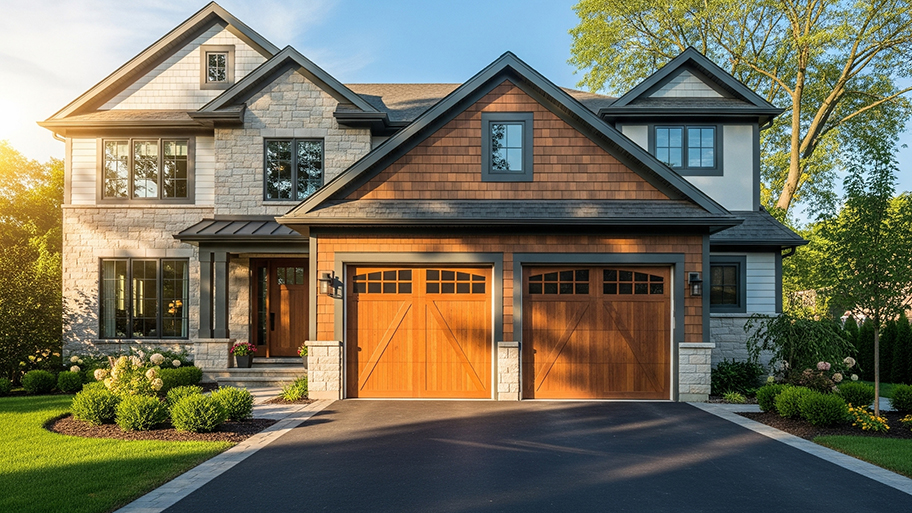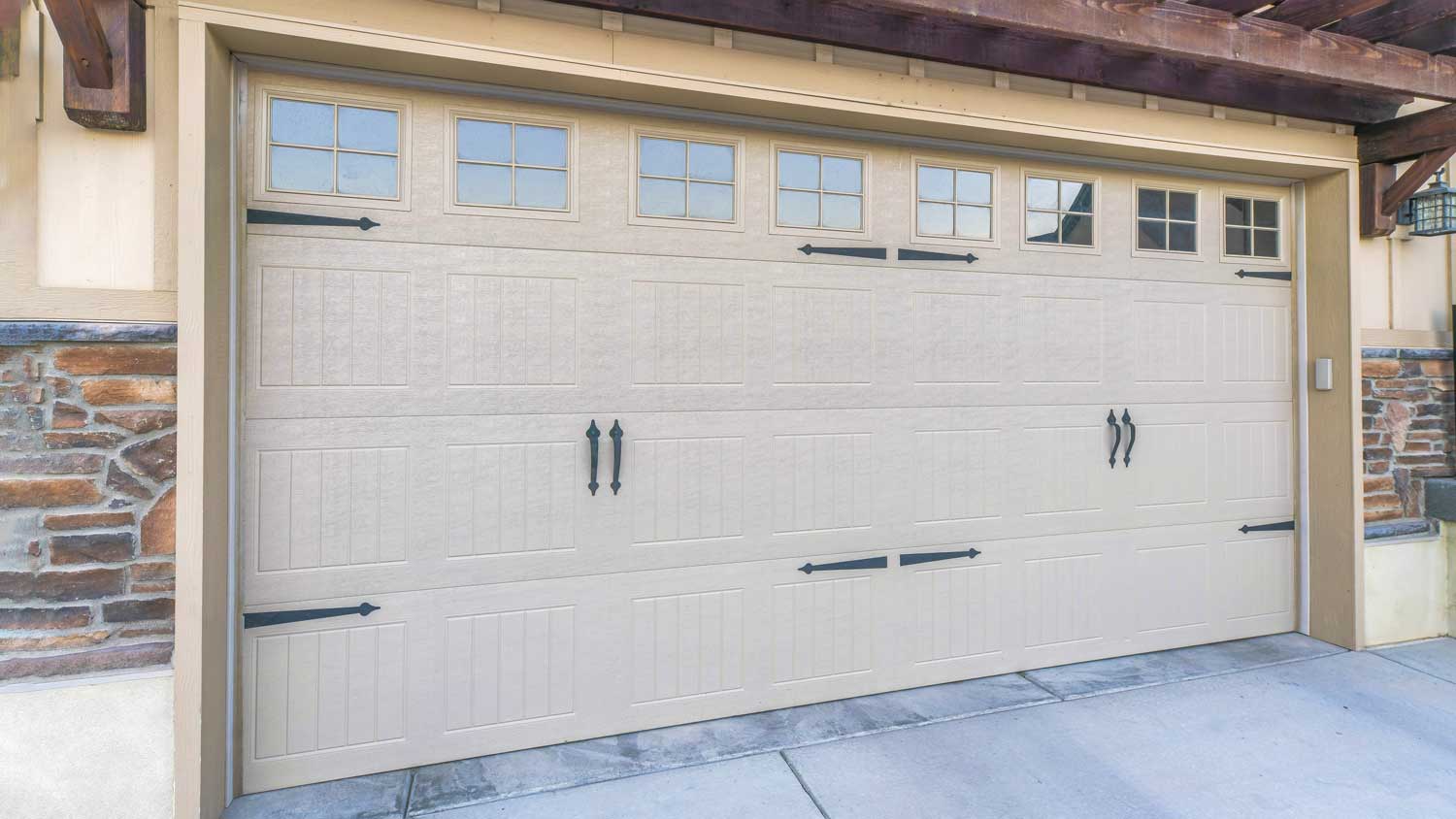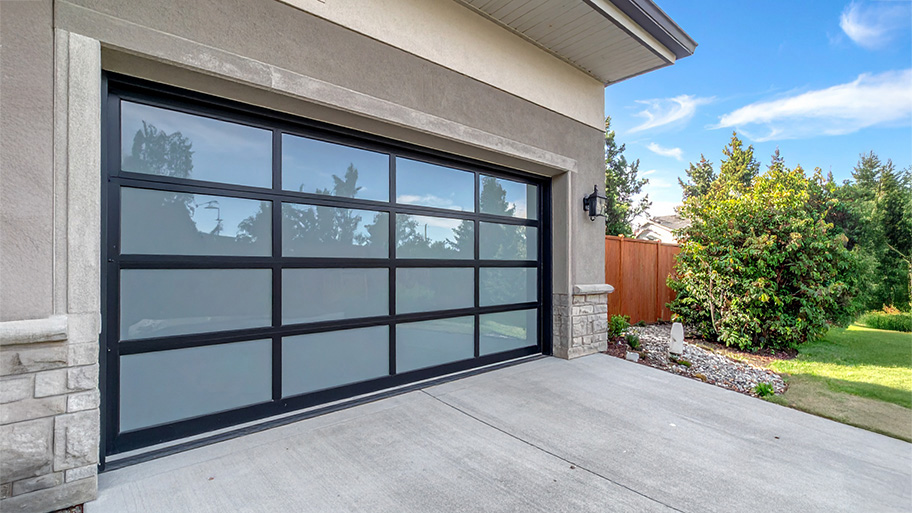
How much does a glass garage door cost? The size, type of glass, and frame material will all impact what you pay.
With average use and regular maintenance, garage door openers can last 15 years


Garage door openers last 10 to 15 years on average.
Overuse and extreme weather play the biggest roles in its operation.
Regular maintenance and cleanings can extend its lifetime.
Loud noises, slow operation, and vibration are signs it’s time to replace your opener.
Expect to spend about $1,190 for a new garage door.
Your garage door is a key entry and exit point in your home—so making sure it works how it should for as long as it should is a big priority for most homeowners. You should expect your opener to last between 10 to 15 years with average use. But if you go in and out of it a lot or completely forget to maintain it, the lifespan can go down fast.
Learn more about what impacts the lifespan of your garage door and how you can take care of it to keep it looking and operating like new for years to come.
The normal lifespan of an average garage door opener is 10 to 15 years. However, many factors can influence how long it will last, such as the make or model of your opener and how frequently you use it. The condition of your garage door also affects the opener’s longevity. For example, a poorly balanced garage door puts more stress on the opener mechanism, therefore wearing the opener down more quickly.
There’s not much in your home that won’t need to be replaced at some point in time. Just like other systems and appliances in your home, improper maintenance, overuse, and other factors can impact how long it works before you need a new one.
Seasoned homeowners know that every corner of a house deserves a bit of maintenance—and your garage door opener is no different. Although it’s less noticeable in your day-to-day home life than your stove or air conditioner, it’s certainly a heavy hitter, so it’s essential you take care of it.
Without proper maintenance and care, issues like rust, bent rails, and dirty tracks can lead to more expensive issues. You should perform routine maintenance (either DIY or by hiring a professional) once every year or so.
If you open or close your garage door twice a day for a year, it adds up to 7,300 uses across 10 years. And if you have multiple cars in the garage or open it often to let your kids play in the driveway or take out trash, that number could easily double or triple.
The more you use your garage door, the faster it’ll wear and tear. Be thoughtful about its use and take good care if you need to use it more often.
During winter or rainy seasons, your garage takes quite a beating. Excessive water and cold weather can lead to swelling, which can cause it to open slowly or sometimes not at all. By learning how to insulate a garage, you can help protect it from the effects of bad weather to prolong its lifespan.
An already-broken spring or an improper mechanical setting (like your garage door opener being too powerful) can quickly lead to problems that may have otherwise taken years to develop.
Call the installer immediately if you notice noises, delays, or other issues a few weeks after installation. You may have a warranty or installation coverage that can help fix the issue immediately before it’s too late.

Being proactive is one of the best things you can do for the health of your door. Here are a few easy ways you can help extend the lifespan of your garage door opener with only a few tools and a bit of elbow grease.
Simply checking out the condition of your garage on a regular basis can make a world of difference. Look for expanding springs, minor dents or dings, and other noticeable issues—and fix them immediately.
If it’s not something you know how to fix on your own, find a garage door repair company near you to do the job. While a repair may cost you between $150-$360, it could save you hundreds in the long run.
Take the time to clean the moving parts of your garage door. Using a bucket of water and a sponge, wipe down your door's springs, cables, and tracks every few months to ensure things work the way they should. If there’s any debris on the track, use a small hand-held vacuum to remove it before wiping it down.
While this may seem like a waste of time for an outdoor and out-of-sight system, it can be the difference between smooth operation and having to brush up on how to replace a garage door spring.
Lubricating your garage door opener regularly can help keep things on track. Once your rollers and tracks are clean, add some lubricant (like WD-40) along the hinges and wheels.
To apply, gradually lift the garage door and add lubricant along each hinge and track as it becomes exposed. You can either choose to hit your garage door button on and off quickly to control the movement or release the lock and lift it manually.
Installing weatherstripping along your garage door can help protect it against elements, like cold, rain, and snow. Not only that, weatherstripping your garage can also help lower your other utility bills, like air conditioning, by keeping the cool air inside.
This is a pretty easy and affordable DIY project, with a lot of potential upside.
While not completely obvious, having a clean and organized garage means you can notice when things may be broken or damaged. With too many things in the way—like toys, tools, and storage—it’s harder to catch small issues before they become larger ones.
By implementing one or multiple garage organization ideas, you can keep things in their place and tools within reach to stay on top of the health of your garage.
On average, a new garage door opener, including installation, can cost anywhere from $300 to $900. Your opener’s brand and type naturally affect the cost, and a brand-new install typically costs more than a replacement. Finally, since most contractors charge garage door opener installation as an hourly project, your local labor cost can also play a significant role in the final cost.
Besides not opening or closing at all, there are a few other indicators that it’s time to replace your garage door opener like:
Slow opening and closing
Random opening and closing
The springs are spread far apart from one another
Unusual noises, like screeching, banging, or grinding
Vibration during operation
If you notice one or more of these signs, call a repair company as soon as possible. Catching an issue in the early stages is the best way to keep your repair costs as low as possible.
DIY garage door installation isn’t for the faint of heart. It involves a lot of specialty tools, know-how, and patience. For example, garage door springs are extremely heavy and the mechanics of the system can vary from opener to opener. Not knowing how to handle either one can add up to a pretty costly mistake.
That being said, if you’re relatively handy and are willing to put in the work, you may be able to DIY the project. But, if you have a heavier or taller door or need electrical work done, it’s best to call in a pro.
The average professional garage door cost will set you back between $748 to $1,642, but can save you a lot of time, money, and potential damages—both to the opener and to yourself.
From average costs to expert advice, get all the answers you need to get your job done.

How much does a glass garage door cost? The size, type of glass, and frame material will all impact what you pay.

Replacing a garage door is necessary to add security and value to your home. Learn how each door type affects the total cost of this project.

Your home's garage door cable repair cost depends on several factors, including the cost of other damage that may be the result or the cause of the failure.

Use this guide to standard garage door sizes to pick out the right door for your new construction or garage renovation.

Wondering why your garage door light is blinking and not opening? Let’s look at three common causes, including an activated safety lock and blocked sensor.

Based on its quality and design, your garage—and its doors—can increase your home’s value. Here’s what you need to know about your garage door alternatives.